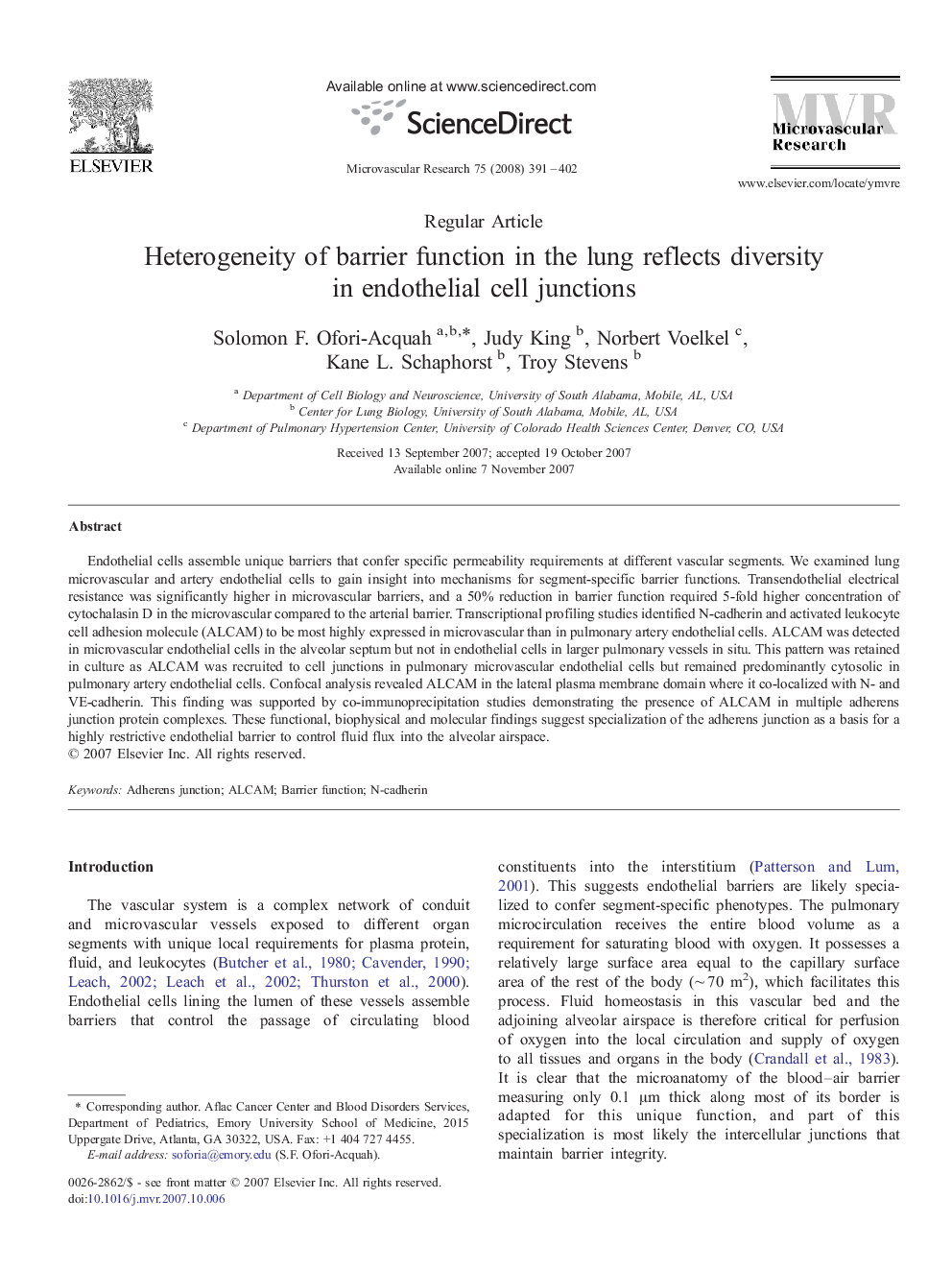| Article ID | Journal | Published Year | Pages | File Type |
|---|---|---|---|---|
| 1995463 | Microvascular Research | 2008 | 12 Pages |
Abstract
Endothelial cells assemble unique barriers that confer specific permeability requirements at different vascular segments. We examined lung microvascular and artery endothelial cells to gain insight into mechanisms for segment-specific barrier functions. Transendothelial electrical resistance was significantly higher in microvascular barriers, and a 50% reduction in barrier function required 5-fold higher concentration of cytochalasin D in the microvascular compared to the arterial barrier. Transcriptional profiling studies identified N-cadherin and activated leukocyte cell adhesion molecule (ALCAM) to be most highly expressed in microvascular than in pulmonary artery endothelial cells. ALCAM was detected in microvascular endothelial cells in the alveolar septum but not in endothelial cells in larger pulmonary vessels in situ. This pattern was retained in culture as ALCAM was recruited to cell junctions in pulmonary microvascular endothelial cells but remained predominantly cytosolic in pulmonary artery endothelial cells. Confocal analysis revealed ALCAM in the lateral plasma membrane domain where it co-localized with N- and VE-cadherin. This finding was supported by co-immunoprecipitation studies demonstrating the presence of ALCAM in multiple adherens junction protein complexes. These functional, biophysical and molecular findings suggest specialization of the adherens junction as a basis for a highly restrictive endothelial barrier to control fluid flux into the alveolar airspace.
Related Topics
Life Sciences
Biochemistry, Genetics and Molecular Biology
Biochemistry
Authors
Solomon F. Ofori-Acquah, Judy King, Norbert Voelkel, Kane L. Schaphorst, Troy Stevens,
